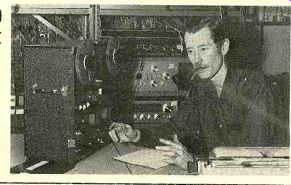
MIXER BASICS
MOST tape decks have provisions for connecting one microphone and/or one high-level ("line") source per channel, and for most purposes this is usually adequate. But what if a particular re cording task requires the use of two (or more) mikes for each channel? Or, after you have recorded three synchronized tracks on a four-channel machine, how do you combine them to "mix down" onto the fourth track? In such cases the problem is that you have several more signal-bearing cables with plugs than you have signal-receiving jacks at your recorder's inputs.
Your immediate temptation is likely to be to reach for one or more "Y adapters" (the audio equivalents of the a.c. line cube taps that let you plug several lamps-or components-into the same socket). True, you can sometimes get away with using this handy expedient, as many used to do to get a mono signal from a stereo phono cartridge. More of ten than not, however, the best use of the simple Y adapter is at those times when you want to feed a single output simultaneously to two inputs--to make two tape copies at once, for example. In the opposite cases I posed, where sever al outputs must be fed into a single input, the Y adapter is likely to create problems of level-setting, degraded frequency response, and possibly greatly increased distortion. The better way is to use a de vice specifically designed for the job: a "mixer." Mixers provide separate, non-interacting level controls for each input signal (and sometimes a master level control as well), and they come in two basic varieties: active and passive. Passive mixers are inexpensive (usually $10 or so), as well they should be, for they consist of little more than the volume controls and a few isolating resistors. But where the levels of the signals to be mixed are high enough to tolerate losses of perhaps 6 to 20 dB (in other words, signal strength drops to between a half and a tenth of its original strength) they are perfectly acceptable. However, the "insertion loss" caused by a simple passive mixer definitely rules it out for use with micro phones, since microphone output signals are so weak (typically in the vicinity of one one-thousandth of a volt) that any further loss would simply invite problems with hum and hiss.
Active mixers, by contrast, contain their own amplifying circuits to compensate for whatever losses occur in the mixing network and controls. Customarily they also contain preamplifiers that boost microphone signals up to nominal "line level" (about 1 volt) before mixing them. Thus the mixer bypasses your recorder's own microphone circuits entirely (this is a blessing for many recorders whose mike-input circuits are excessively noisy) and plugs directly into the deck's high-level or "aux" jacks.
A typical mixer might be described as a six-in, two-out unit, meaning that it can handle six signal sources and that it has a two-channel, or stereo, output. In most cases, each of the six inputs could be switched to accept either a microphone or a high-level source. On some models inputs may be permanently "assigned"--that is, put into fixed groups of three "left" inputs and three "right" inputs. A much more flexible and desirable arrangement, however, is one that permits you to make your own channel assignments for each (or at least some) of the inputs. This is usually accomplished with simple pushbutton switching, and most mixers that offer this feature have the valuable capacity of allowing you to feed a single sound source to both left and right channels simultaneously. This is of great help to the live recordist, who frequently wants to be able to put a soloist in the center of the stereo spread.
There are a host of other helpful mixer features that I will discuss in upcoming columns.
Also see:
Source: Stereo Review (USA magazine)